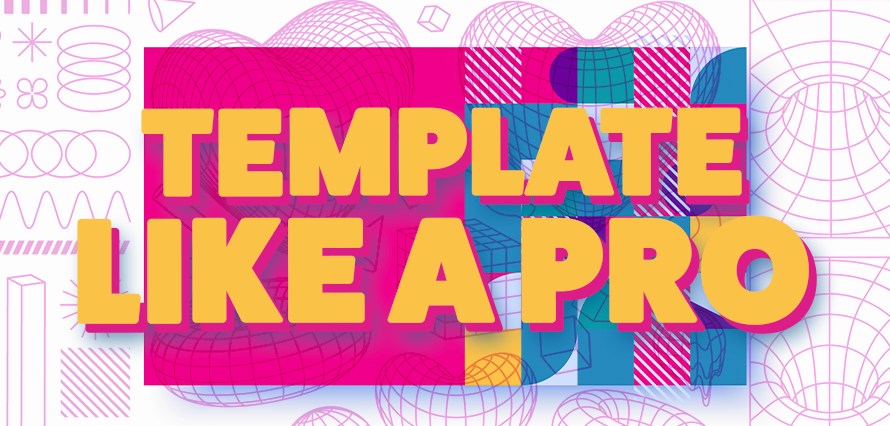July 8, 2025

If you’re creating social media content regularly, you know how chaotic things can get. Endless campaigns, shifting priorities, last-minute changes… It’s a lot.
That’s why design templates are more than a convenience; they’re a strategic foundation for marketing on social. Done right, they can boost consistency, save hours, and improve engagement. So, how can you stretch them for marketing, keeping your content fresh? Let’s talk about why they matter and how to design and manage them smartly.
Why Templates Matter for Design and Branding
Visual Consistency Builds Trust. A well-made template ensures that every piece of content feels like part of the same brand story. The spacing, colours, typography, and logo placement aren’t small details. They’re what makes your brand instantly recognisable, even mid-scroll. Take brands like Headspace or Sephora, you can spot their content from a mile away. That’s not luck; it’s intentional design work that started with a solid, repeatable template system.
When you’re not reinventing the wheel with every post, you have time to focus on details that matter, like hierarchy, alignment, and composition. A great template frees you up to spend less time on layout and more on refining the message and visuals. And when you’re juggling client work or managing multiple channels, that’s a serious win.
What Makes a Good Template?
A strong social media design template is more than just a background and a headline box. Here’s what to consider when building them:
Clear visual hierarchy: Headline first, CTA second, everything else flows around that.
Flexible grid system: Make sure the layout works with different types of content (images, text, stats, quotes).
Room for variation: Leave enough “give” in your layout to add or remove elements without breaking the design.
Contrast and accessibility: Think beyond aesthetics. Use enough contrast between text and background and stick to legible font sizes, especially for Stories and Reels.
Templates should work at both macro (your overall grid or feed) and micro (individual post) levels. For example, you might design a quote card with your logo subtly placed in the corner, your brand colour as a background, and plenty of negative space for the text to breathe.
How to Keep Templates Fresh
One of the biggest mistakes is thinking templates limit creativity.
Here’s how to do that:
Adjust the layout slightly over time. Shift your text block from top to middle, try a vertical photo crop instead of horizontal, or use a shape overlay to create depth. Small changes go a long way. Rotate through brand-approved colour schemes. If your brand has a palette of five colours, don’t just stick to one; use them all. You can alternate the dark background with light text for light text on a dark background. Switch up type pairings. Stick to 2-3 fonts max but explore combinations within that. A bold headline in all caps with a softer subheading in italics can completely change the tone of the design. Integrate new elements over time. Add animated stickers, icons, borders, or motion graphics versions of your templates. A once-static post can become a Reel cover or short video teaser with just a few tweaks.
Organise and Share Templates: Designing a beautiful template is one thing. Making it usable and shareable is another. Here’s how to keep things smooth and scalable:
Use cloud-based platforms: Tools like Canva, Figma, and Adobe Express allow you to build reusable, collaborative templates. Create folders by content type (e.g., “Testimonials,” “Reels Covers,” “Stats”) and share them with clients or your team.
Create usage guidelines: Don’t assume everyone knows how to use a template. Include simple “how-to” instructions inside your shared files, what to replace, what not to touch, character limits for text blocks, and how to export for different platforms.
Batch-export assets: Create a mini “content drop” with exported versions of your templates in different sizes: 1:1 for feeds, 9:16 for Stories/Reels, 4:5 for boosted posts. This is a lifesaver when working with content managers or VA teams.
Keep a master file: Always keep a locked version of your original template designs—your untouched gold standard. If things get messy (and they will), you’ll have something clean to revert to.
Templates are not the death of creativity; they’re what unlock it. When you’re not bogged down designing from scratch, you can spend more time refining your message, testing new formats, and crafting content that truly connects.
So take the time to build beautiful, flexible, and scalable templates. Your future self (and your clients) will thank you.
Whether you’re managing a team, scaling your agency, or just trying to post consistently without losing your mind, this is your sign to invest in better design systems. If you’re ready to stop designing from scratch and start building smarter, branded content that works, templates are the way to go. Check this blog to know more about it, and if you need help creating a set of scroll-stopping templates or organising your workflow, drop us a message.